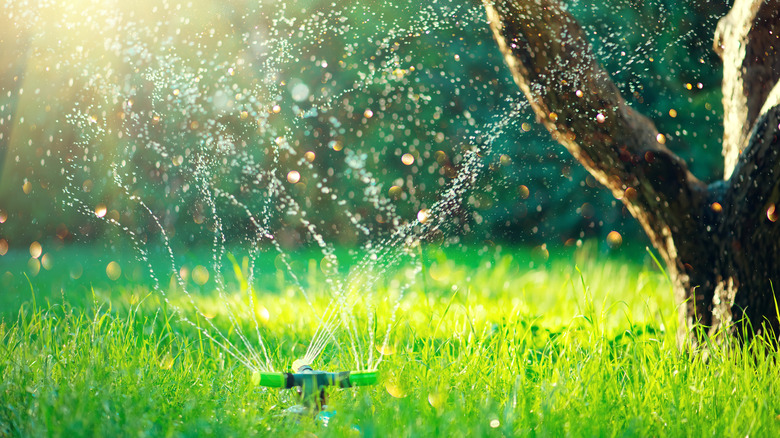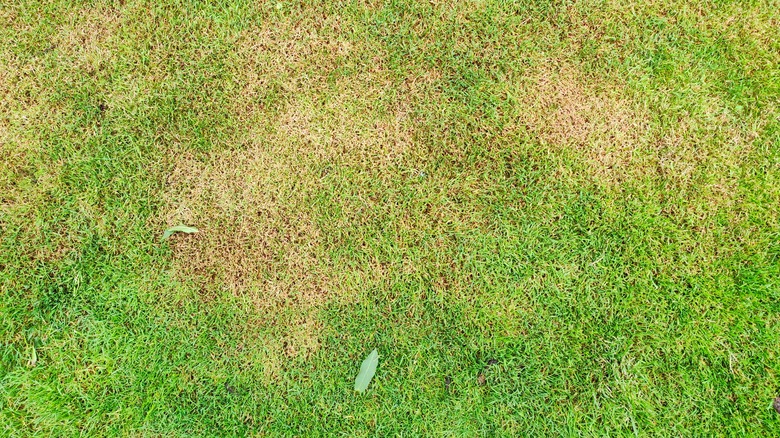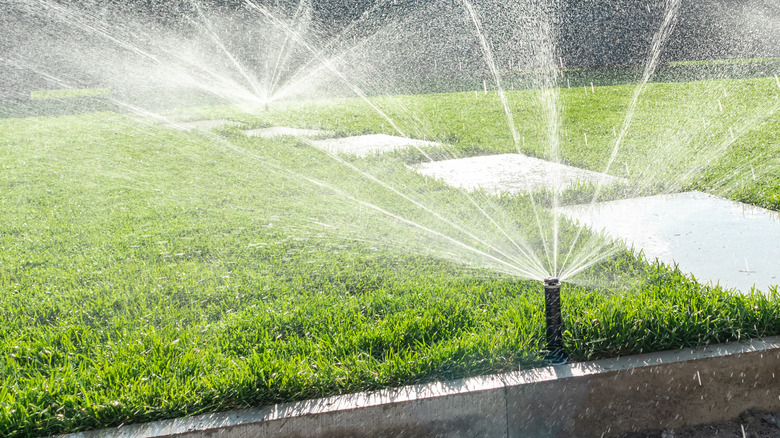How Much Water Do You Really Need To Maintain Your Lawn?
You might not know this, but about 102,000 square miles of land in the United States is devoted to lawns, parks, and golf courses, and that's an area equal to the states of Maine, New Hampshire, Vermont, and Massachusetts put together, per Discover Magazine. With nearly half of the country experiencing drought conditions, its easy to see how thirsty lawns, which might have been a source of so much joy in the past, could so easily turn into a source of stress today.
Having said that, caring for a lawn may not be as challenging as it first appears, because lawns may not be as needy as we think. While water is important for a lawn not just to survive but thrive, different types of grasses have different water requirements. Cool-season grasses like Kentucky bluegrass and fine fescues may be more likely to go dormant if there's less water, while warm-season grasses like Zoysia and Bermuda are better equipped to deal with drought. How much water your lawn needs will also depend on the kind of soil your grasses grow on, with clay needing less, and sandy soil needing more.
How much water your lawn needs a week
Per Today's Homeowner, this means ensuring that
Your grassy space should get at least 1 to 1.5 inches of water a week, according to the lawn experts at Scotts. This water can come naturally through rainfall, or artificially, fed through a hose or sprinkler system. To make sure your lawn is getting what it needs, North Dakota State University (NDSU) recommends layings cups at distances between 5 to 10 feet from the foot of your sprinkler, then measuring the time it takes for the sprinkler to fill that cup with an inch of water, which should tell you how much time it takes for your lawn to get the minimum it needs.
But if you want to know exactly how much water you'll need to keep your lawn going, you'll probably need the help of your calculator. Per Today's Homeowner, it takes 0.623 gallons of water to provide a square foot of lawn with an inch of water. To measure the watering needs your lawn requires to maintain it, simply measure its dimensions (e.g., 10 feet by 10 feet) and multiply the total by 0.623.
How to maintain your lawn
While that sounds like plenty of water to go through a week, there are other ways to keep your lawn going when heat and drought conditions make watering a challenge. Laura Edwards, a climatologist at South Dakota State University Extension, says you can start by watering your lawns more efficiently. To do so, ensure your grass gets its fill between 5 a.m. to 9 a.m., and that your sprinklers only hit the lawn and not any non-grassy spaces. You can also water infrequently, as long as the lawn gets its inch of water per week; NDSU further recommends that no watering be done at night since that water won't evaporate and that could lead to diseases.
Edwards also says your lawn will benefit from less trimming and that you leave as much as 4 inches of grass growing. Having higher blades of grass can help the lawn maintain a deeper and more efficient root system and it'll help the soil maintain a lower temperature as well. She further recommends weeding lawns on a regular basis, since weeds compete with grass for nutrition.
If all else fails, NDSU says it's perfectly acceptable to let your lawn go dormant, which is another way of saying you can allow grasses to turn yellow, which they naturally do when they're exposed to intense heat. The site says grasses are capable of returning to their green state as soon as temperatures drop.


